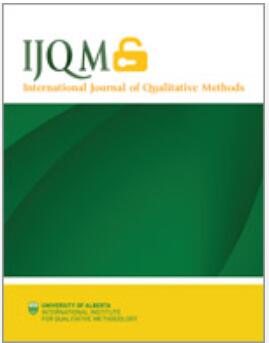Arts-Based Approaches to Priority Setting: Current Applications and Future Possibilities
IF 3.8
2区 社会学
Q1 SOCIAL SCIENCES, INTERDISCIPLINARY
引用次数: 0
Abstract
Background: Arts-based research methods and priority setting research both reflect growing commitments towards public and participant involvement in research activities. This has contributed to a growth of these respective methods across research disciplines and sectors, but their intersection has not been explored. Methods: We conducted a scoping review to map the state-of-the-science of arts-based approaches within priority setting research. We conducted an open search of three databases, conducted reference list mining, and hand-searched two journals to identify relevant articles. Of 5457 records retrieved, 11 met our pre-established inclusion criteria and were included in the review. Data were extracted using Microsoft Excel to produce narrative and descriptive summaries. Findings: All articles had some degree of health focus. Areas of priority setting centered on chronic illness, hard to reach populations, cancer survivorship, dental reform, and youth. In terms of artistic approaches, the majority of the articles included visual methods, with some articles utilizing multiple art approaches such as music, drawing, and filmmaking. Qualitative methods were used in all articles alongside the arts-based approaches, encompassing techniques such as interviews, discussions, and storytelling. Priority setting activites were mainly facilitated in group settings. The suggested benefits of arts-based approaches included enhancing participant communication, improving accessible research dissemination, and encouraging dialogues on identified health concerns. Challenges with using arts-based approaches included limitations on time and resources. Conclusion: Arts-based approaches to priority setting is an expanding field, with clear applications across various research contexts and priority focal areas. Further attention to the integration of arts-based approaches within priority setting, their theoretical underpinnings, and concurrent development and evaluation of arts-based priority setting methods are warranted.以艺术为基础的优先事项设定方法:当前的应用和未来的可能性
背景:以艺术为基础的研究方法和确定优先事项的研究都反映了公众和参与者对参与研究活动的日益增长的承诺。这促进了这些方法在各研究学科和领域的发展,但它们之间的交叉点尚未得到探讨。方法:我们进行了一次范围界定审查,以了解优先事项设定研究中以艺术为基础的方法的科学现状。我们对三个数据库进行了开放式检索,对参考文献列表进行了挖掘,并对两份期刊进行了手工检索,以确定相关文章。在检索到的 5457 条记录中,有 11 条符合我们预先设定的纳入标准,并被纳入综述。我们使用 Microsoft Excel 对数据进行了提取,并制作了叙述性和描述性摘要。研究结果所有文章都在一定程度上关注健康问题。优先考虑的领域集中在慢性病、难以接触的人群、癌症幸存者、牙科改革和青少年。在艺术方法方面,大多数文章都采用了视觉方法,有些文章还采用了多种艺术方法,如音乐、绘画和电影制作。所有文章在使用艺术方法的同时,还使用了定性方法,包括访谈、讨论和讲故事等技巧。确定优先事项的活动主要在小组环境中进行。以艺术为基础的方法所带来的益处包括:加强参与者之间的交流、改善研究成果的传播以及鼓励就已确定的健康问题开展对话。使用艺术方法面临的挑战包括时间和资源的限制。结论以艺术为基础的优先事项确定方法是一个不断扩展的领域,在各种研究背景和优先重点领域都有明确的应用。有必要进一步关注将艺术方法纳入优先事项设定、其理论基础,以及同时开发和评估基于艺术的优先事项设定方法。
本文章由计算机程序翻译,如有差异,请以英文原文为准。
求助全文
约1分钟内获得全文
求助全文
来源期刊

International Journal of Qualitative Methods
SOCIAL SCIENCES, INTERDISCIPLINARY-
CiteScore
6.90
自引率
11.10%
发文量
139
审稿时长
12 weeks
期刊介绍:
Journal Highlights
Impact Factor: 5.4 Ranked 5/110 in Social Sciences, Interdisciplinary – SSCI
Indexed In: Clarivate Analytics: Social Science Citation Index, the Directory of Open Access Journals (DOAJ), and Scopus
Launched In: 2002
Publication is subject to payment of an article processing charge (APC)
Submit here
International Journal of Qualitative Methods (IJQM) is a peer-reviewed open access journal which focuses on methodological advances, innovations, and insights in qualitative or mixed methods studies. Please see the Aims and Scope tab for further information.
 求助内容:
求助内容: 应助结果提醒方式:
应助结果提醒方式:


